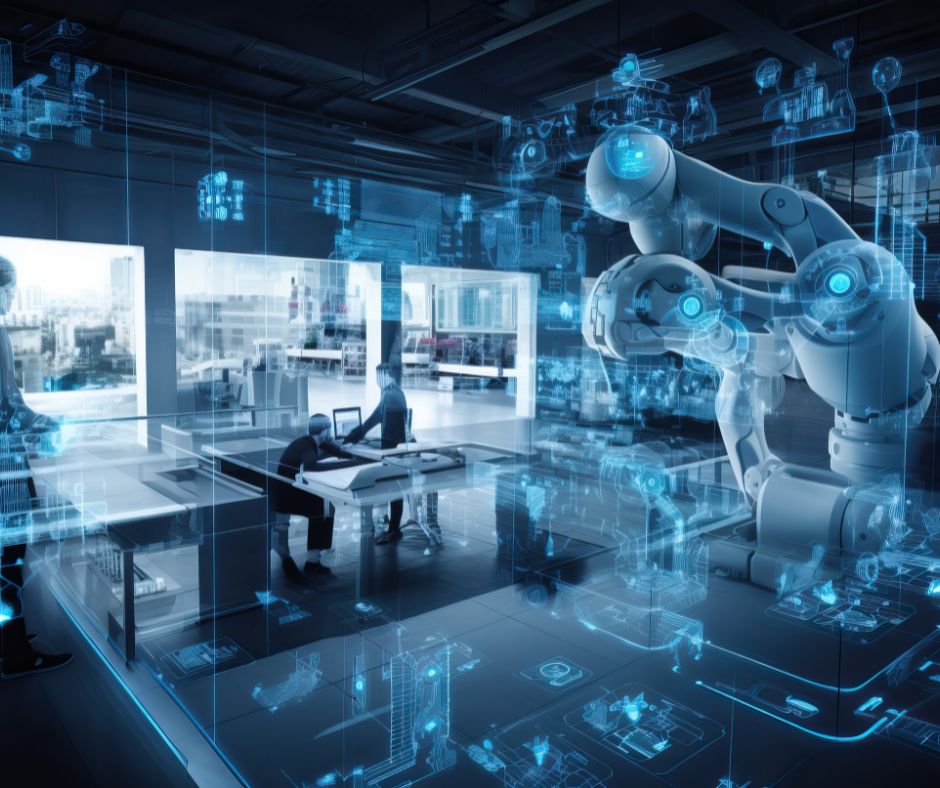Home | Industries | High-Tech
High-Tech
Data-Centric Security solutions with the fastest time-to-value and superior user experience
Home | Industries | High-Tech
Data-Centric Security solutions with the fastest time-to-value and superior user experience
Collectively holding trillions of dollars in market value, high-tech companies are pioneers at the forefront of technological advancement. Yet, it is this factor, combined with their reliance on cloud services and the substantial volumes of sensitive data they handle, that make these organizations prime targets for cyberattacks.
Learn how KLA Tencor safeguard customer data & intellectual property (IP) throughout its lifecycle
Discover how NextLabs bridges gaps and offers key solutions to integrate technologies in the A&D industry
Learn how to secure an expanding digital core with Zero-Trust Data-Centric Security

As leaders in cutting-edge technology, high-tech companies are often the first to adopt new technologies that may not yet be fully secure against cyber threats, exposing them to unique vulnerabilities. With the presence of ‘shadow IT’, which is the unsanctioned use of technology within an organization, it complicates the task of accurately tracking the location of data and who has access. This could result in the increased risk of data loss and leakage, data breaches, and security vulnerabilities.
High-tech firms handle extensive intellectual property, often stored on the cloud and employees’ devices. Knowledge workers in high-tech have access to valuable propriety information such as source code and application design files of products that are built on off-the-shelf (OTS) components, making IP theft easier. This poses insider threat risks, causing substantial harm to a company’s competitiveness or compromising data security.


High-tech companies’ global supply chains and remote work increase exposure of sensitive data and complicate information flows, amplifying risks of breaches and unauthorized disclosures. Sharing intellectual property, research, and customer data introduces cyber threats, complicating data monitoring and security. Reliance on Cloud services and third-party platforms further challenges maintaining granular control over data access and consistent security across applications.
High Tech companies, especially those in the engineering and electronics sector, require robust data governance due to their handling of sensitive data types, which includes customer information, financial records, protecting technology, strategic trade secrets, and regulated data. Safeguarding against breaches, ensuring compliance, and maintaining confidentiality require meticulous policies and strategies. Moreover, the dynamic nature of technology and regulations heightens the urgency for effective data governance measures.

To address the complexities of early adoption of new technologies, insider threats, and extensive global supply chain collaboration while enabling data governance, high-tech companies must have a thorough and forward-thinking strategy for data-centric security that incorporates the following key elements:
A distributed policy engine supported by the policy platform enables uniform security controls, protecting data across different structured and unstructured repositories, regardless of application, database, server, and file. Such adaptability allows companies that are operating across borders and embracing remote work and distributed teams to effectively adhere to local regulations and operational requirements while maintaining a unified approach to security and safeguarding valuable proprietary information.
Protecting sensitive data across all devices and locations requires data-centric security controls like Digital Rights Management (DRM), data segregation, and data masking. DRM secures application design files of products built on OTS components, while dynamic data masking and segregation restrict access to authorized users, protecting customer and financial data. These controls prevent unauthorized data transmission or storage, particularly on Cloud or third-party platforms, securing data in transit and at rest.
Automating information handling strengthens data governance by ensuring consistent, efficient, and scalable data management. Multiple controls are applied collectively in a process, reducing human error, ensuring compliance, and improving tracking and auditing of proprietary information like source code and design files. Automation also enables real-time monitoring to prevent security violations, improving overall data security.
Consolidating audit logs in a report server provides visibility and accountability across geographically dispersed supply chain and a mobile workforce, allowing companies to gain in-depth insights into system activities, access patterns, and potential security incidents throughout their network. This unified method streamlines auditing procedures and compliance assessments, demonstrating adherence to regulatory standards and enhancing overall data governance.
With dynamic authorization and Attribute-Based Access Control (ABAC), CloudAz improves data security by centralizing administration of attribute-based security policy. CloudAz’s Policy Controller automates the enforcement of data access policies dynamically at that time of access request, allowing enterprises to increase collaboration with dispersed teams and external partners with greater productivity and efficiency, while decreasing the time to market.
High-tech industries heavily depend on Computer-Aided Design (CAD), Product Lifecycle Management (PLM) applications and Enterprise Resource Planning (ERP) systems for managing critical design and manufacturing data. NextLabs’ SkyDRM enforces automated rights protection to extend security to protect data files downloaded and shared with partners. It effectively prevents unauthorized technology usage while facilitating secure collaboration internally and externally with multiple stakeholders, thus establishing a secure collaborative environment.

High-tech industries heavily depend on Computer-Aided Design (CAD), Product Lifecycle Management (PLM) applications and Enterprise Resource Planning (ERP) systems for managing critical design and manufacturing data. NextLabs’ SkyDRM enforces automated rights protection to extend security to protect data files downloaded and shared with partners. It effectively prevents unauthorized technology usage while facilitating secure collaboration internally and externally with multiple stakeholders, thus establishing a secure collaborative environment.
NextLabs’ DAE enforces data-level security controls, such as dynamic data masking and segregation, to ensure that any data not authorized for viewing is masked, and that fields and records are segregated, allowing only authorized users with permitted access to view them. This strengthens internal controls, promotes transparency, and fosters accountability for data usage, even in Cloud and third-party applications. DAE coupled with cross-domain policies enhances data governance by protecting high-risk data from unauthorized disclosure, ensuring adherence to regulations, and preserving confidentiality.
Given the geographically dispersed workforce and remote work prevalent in this industry, communication tools play a central role in enabling effective collaboration among stakeholders. NextLabs’ Application Enforcer seamlessly integrates with enterprise and cloud applications such as Microsoft Teams, Exchange, and Slack by enforcing granular identity-based policies. This enhances security posture, preventing unauthorized or unintended access to documents, meetings, and collaboration channels.
CloudAz‘s Report Server integrates with third-party systems SIEM and SOAR, enabling enterprise scalability to meet complex authorization requirements of mission-critical applications. With seamless integration, high-tech companies can consolidate the event logs, as well as critical data for accessing both applications and the data stored within them, from all systems into a single SIEM system and they can monitor all the data activities from a central dashboard. This enables effective activity monitoring and auditing, preventing data breaches or wrongful disclosures.

CloudAz‘s Report Server integrates with third-party systems SIEM and SOAR, enabling enterprise scalability to meet complex authorization requirements of mission-critical applications. With seamless integration, high-tech companies can consolidate the event logs, as well as critical data for accessing both applications and the data stored within them, from all systems into a single SIEM system and they can monitor all the data activities from a central dashboard. This enables effective activity monitoring and auditing, preventing data breaches or wrongful disclosures.
Zero Trust Data Centric Security
NextLabs® patented dynamic authorization technology and industry leading attribute-based zero trust policy platform helps enterprises identify and protect sensitive data, monitor and control access to the data, and prevent regulatory violations – whether in the cloud or on premises